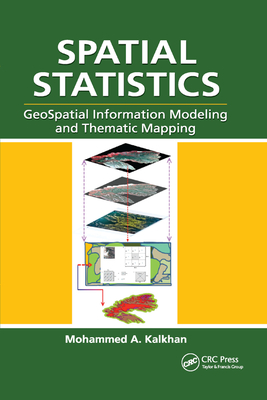Geographic Information Systems Demystified
暫譯: 地理資訊系統揭秘
Stephen R Galati
- 出版商: Artech House Publish
- 出版日期: 2006-09-06
- 售價: $4,120
- 貴賓價: 9.5 折 $3,914
- 語言: 英文
- 頁數: 302
- 裝訂: Hardcover
- ISBN: 158053533X
- ISBN-13: 9781580535335
-
相關分類:
地理資訊系統 Gis
無法訂購
商品描述
Most GIS titles focus on the geography end, so it's refreshing to see an analysis which focuses equally on business applications of GIS results and strategies, coming with the authority of a member of the American Society of Photogrammetry and Remote Sensing, American Geophysical Union, and the New York City Chapter of Geographic Information Systems and Mapping Operations.
---Midwest Book Review, November 2006
Table of Contents:
Introduction ?A Definition of Geogrpahic Information Systems. Poincar?s Maps and the Move Toward GIS. Old Technology, New Platform. The GIS Mystique. About this Book. The Books Approach to GIS Concepts. Our Goal to Demystify Geographic Information Systems.
Part 1: What Is a
Geographic Information System? From Geographic Data to Geographic
Information.
How Does a GIS Work? ?The Fundamental Flow of Information. Geography and Geographic Data. Georeferencing. Queries: Locations and Attributes. Geoprocessing. Spatial Analysis. Geographic Information.
Why Use a GIS? ?Discerning Your Need. Common GIS Products and Bi-Products. Data Management Systems. Quality Assurance, Six Sigma and GIS. Geostatistical Analysis. Project Visibility and Popularity. Benefits, Cost-Savings and Automation.
The Structure of Geographic Data ?Raster and Vector. Feature Geometry. Image Structures. Attribute Tables and Indices. Topology. Generalization. Conclusion.
Geospatial Metadata ?What is Metadata? Geospatial Metadata and GIS. Metadata Schemata, Element Sets and Syntax. Geospatial Metadata Standards. Executive Orders #12906, 12951 and #13286. The National Spatial Data Infrastructure (NSDI). Geospatial Metadata Clearinghouses and Publishing Resources.
Part 2: Geodesy, Earth
Models and Coordinate Systems ? Understanding the Core GIS
Environment.
The Basics of Geodesy and Scale ?What Is Geodesy? Understanding Map Scale. Simple Map Scale Calculation. Scale and Accuracy.
The Ellipsoid ?History of the Earth Model. Shape of the Earth. Mathematical Model of the Earth. Typical Earth Shape Calculation. Reference Ellipsoids.
The Horizontal Datum ?What is a Geodetic Datum? Primary Categories of Geodetic Datums. Standard Horizontal Datums. Horizontal Datum Transformation Models. Horizontal Grid Transformation Methods.
The Vertical Datum ?Mean Sea Level and The Geoid. Standard Vertical Datums. Vertical Datum Transformation Models. Vertical Grid Transformation Methods.
The Map Projection ?The Physicality of the Globe. Transformation from the Globe. What Is a Map Projection? Choosing a Map Projection. Types of Map Projections (Properties). Classifications of Map Projections. Distortion and the Indicatrix.
The Coordinate System ?What Is a Coordinate System? The Story of Latitude and Longitude. The Cartesian Coordinate System. Groups and Systems. The State Plane Coordinate Systems. The Gauss-Kruger Grids for the Eastern Hemisphere. Universal Transverse Mercator (UTM). Coordinate System Implementation in GIS.
Part 3: GIS
Applications and Environments?Geographic Data for Analysis and
Presentation.
Thematic Mapping ?The Need for Thematic Mapping. Manipulating Thematic Layers. Types of Thematic Maps. Map Essentials: Data, Classification, Portrayal and Distinction. Common Cartographic Elements.
GIScience, Engineering and Related Applications ?Using GIS for Technical Applications. GIScience: Principles and Applications. Engineering Applications. GIS Business Planning: Applying GIS on Technical Projects. Marketing and Financial Applications.
GIS and the Environment ?Using GIS for Environment Applications. Managing Natural Resources. Environmental Investigation and Remediation Applications. Shoreline Management Systems. Other Environmental Applications.
GIS and the Public ?A Public Need for Information. Managing Public Health and Safety. Disaster: Planning, Response and Recovery. Transportation and Information. Homeland Securitys Third Eye. Public Education Applications. Redefining Public Policy.
Getting Started with GIS - Environments, Tools, and Data ?/span> Getting Up and Running?with GIS. Leading For-Purchase GIS Environments. GRASS and Other Free GIS Environments. GIS Component Software. Geospatial Data Clearinghouses.
Afterward: Geographic Information Systems ?The Future of this Growing Technical Revolution.
Appendices ?Reference Ellipsoid Parameters. Worldwide Geodetic Datum.
Glossary. Bibliography. Index.
商品描述(中文翻譯)
```
評論:
大多數地理資訊系統(GIS)書籍專注於地理學,因此看到一個同樣關注GIS結果和策略的商業應用分析,令人耳目一新,這本書的作者是美國攝影測量與遙感學會、美國地球物理聯合會以及紐約市地理資訊系統與測繪運作分會的成員。
---《中西部書評》,2006年11月
目錄:
導言 ? 地理資訊系統的定義。Poincaré 地圖與GIS的發展。舊技術,新平台。GIS的神秘感。關於本書。本書對GIS概念的探討。我們的目標是揭開地理資訊系統的神秘面紗。
第一部分:什麼是地理資訊系統?從地理數據到地理資訊。
GIS是如何運作的? ? 資訊的基本流動。地理學與地理數據。地理參考。查詢:位置與屬性。地理處理。空間分析。地理資訊。
為什麼使用GIS? ? 辨識您的需求。常見的GIS產品和副產品。數據管理系統。質量保證、六西格瑪與GIS。地理統計分析。項目可見性與受歡迎程度。好處、成本節省與自動化。
地理數據的結構 ? 光柵與矢量。特徵幾何。影像結構。屬性表與索引。拓撲。概括。結論。
地理空間元數據 ? 什麼是元數據?地理空間元數據與GIS。元數據架構、元素集與語法。地理空間元數據標準。行政命令 #12906、12951 和 #13286。國家空間數據基礎設施(NSDI)。地理空間元數據清理中心與出版資源。
第二部分:大地測量學、地球模型與坐標系統 ? 理解核心GIS環境。
大地測量學與比例的基本知識 ? 什麼是大地測量學?理解地圖比例。簡單的地圖比例計算。比例與精度。
橢球體 ? 地球模型的歷史。地球的形狀。地球的數學模型。典型的地球形狀計算。參考橢球體。
水平基準面 ? 什麼是大地基準面?大地基準面的主要類別。標準水平基準面。水平基準面轉換模型。水平網格轉換方法。
垂直基準面 ? 平均海平面與大地水準面。標準垂直基準面。垂直基準面轉換模型。垂直網格轉換方法。
地圖投影 ? 地球的物理性。從地球的轉換。什麼是地圖投影?選擇地圖投影。地圖投影的類型(特性)。地圖投影的分類。扭曲與指示器。
坐標系統 ? 什麼是坐標系統?緯度與經度的故事。笛卡爾坐標系統。群組與系統。州平面坐標系統。東半球的高斯-克魯格網格。通用橫麥卡托(UTM)。GIS中的坐標系統實施。
第三部分:GIS應用與環境 ? 用於分析與呈現的地理數據。
主題地圖 ? 主題地圖的需求。操作主題圖層。主題地圖的類型。地圖要素:數據、分類、表現與區分。常見的製圖元素。
GIS科學、工程與相關應用 ? 將GIS用於技術應用。GIS科學:原則與應用。工程應用。GIS商業規劃:在技術項目中應用GIS。市場與財務應用。
GIS與環境 ? 將GIS用於環境應用。管理自然資源。環境調查與修復應用。海岸線管理系統。其他環境應用。
GIS與公眾 ? 公眾對資訊的需求。管理公共健康與安全。災難:規劃、應對與恢復。交通與資訊。國土安全的第三隻眼。公共教育應用。重新定義公共政策。
開始使用GIS - 環境、工具與數據 ?/span> 開始運行GIS。主要的商業GIS環境。GRASS及其他免費GIS環境。GIS組件軟體。地理空間數據清理中心。
後記:地理資訊系統 ? 這場不斷增長的技術革命的未來。
附錄 ? 參考橢球體參數。全球大地基準面。
詞彙表。參考書目。索引。
```






























